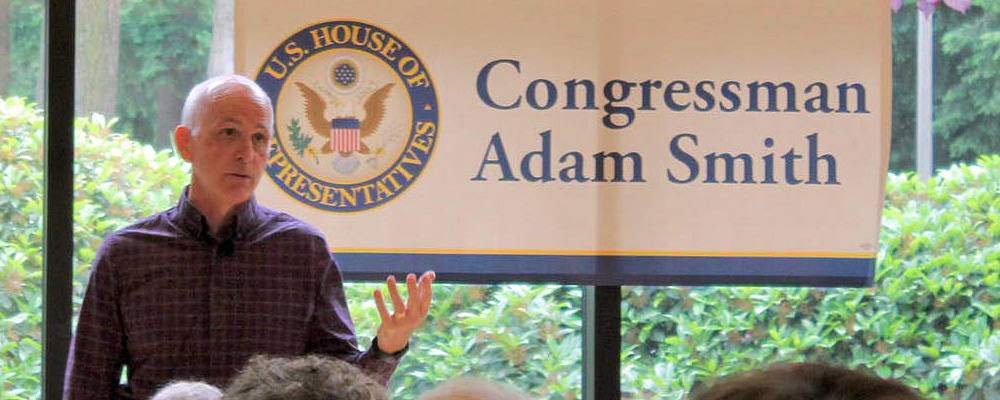Sea-Tac International Airport has been left out of a proposed Government Accountability Office (GAO) study on the FAA’s measurement, evaluation, and mitigation of aircraft noise, and U.S. Representative Adam Smith is seeking to remedy the omission.
On Oct. 31, 2019, Rep. Smith (D – WA 9th District) sent a letter to the GAO specifically requesting that its “assessment be broadened to incorporate Single Site airports in addition to metroplexes that the GAO is already intending to study”; see Rep. Smith’s full letter here (PDF file).
Congressman Smith’s action follows a June 18, 2019, letter from 29 Members of Congress requesting the GAO study show how the FAA has considered impacts from noise while implementing the Next Generation Air Transportation System (“NextGen”) in major metropolitan areas, specifically deemed by the FAA as “Metroplexes” (areas with complex and multiple-airport air traffic patterns).
The problem triggering the Congressman’s letter? Despite being the 8th busiest and fastest-growing airport in the U.S., Sea-Tac is defined as a “Single Site” airport by the FAA and therefore, excluded.
The effort to include Sea-Tac was supported by Quiet Skies Puget Sound founder Sheila Brush (Ms. Brush is also an appointee to the Sea-Tac Airport Round Table (StART)). Upon learning of the June 18, 2019, letter, Ms. Brush immediately reached out to Representative Smith’s office to request consideration of a similar letter to the GAO to include “single site” airports that are also implementing new NextGen projects. Congressman Smith agreed. As stated in his letter, “Communities surrounding Single Site airports impacted by NextGen procedure changes have expressed significant concern over noise impacts, meriting the inclusion of these Single Sites in the pending study.”
A few of Rep. Smith’s questions:
- How does the FAA consider noise impacts when implementing new routes as part of NextGen at Single Site airports, and has the FAA been consistent in assessing noise impacts?
- Is the FAA’s criteria for defining significant noise increases sufficient to capture negative impacts?
- Does the FAA adequately measure and disclose noise impacts from changes in flight paths over impacted communities?
- Has the FAA provided any lessons learned from litigation and settlements?
- What has the FAA done to study the impact of increased overflight frequency, particularly increases caused by use of new technologies to more closely space flights?
Ms. Brush stated:
“Working with Congressman Smith and his staff is rewarding. It’s true this end result – putting Sea-Tac Airport ‘in play’ for the national GAO study – carries no guarantees. However, from a citizen’s perspective, the experience of working with a congressional office that is so finely tuned to take important ideas and run with them, is very inspirational.”
One particularly important element of Rep. Smith’s letter is frequency. According to Ms. Brush, “What is most impactful is addressing the increase in “frequency” which is achieved, in NextGen terminology, by ‘Wake Turbulence Re-Categorization or Wake Recat’. This change reduces the separation between aircraft, front to back and side by side. They arrive much closer together. This is why communities feel under assault. And yet it’s been considered by the FAA to be a procedural change that requires no noise impact study. This is why having the GAO actually review the FAA is such a remarkable and important opportunity for those living under the flight paths.”
Note: at the time of this story, the cities of Des Moines, Burien and Federal Way – representing roughly 75% of the citizens in the original six StART cities – have suspended participation in “StART.” See prior coverage here.
Ms. Brush noted that her work with Congressman Smith’s office occurred and continued outside of the StART process:
“The cities have defined many flaws in the process and substance relating to the Port of Seattle’s StART – flaws so significant that they cause harm to the goal of achieving the objectives of many StART members. Hopefully, the Port will be receptive to basic reformations in transparency, accountability, and mission that allow this organization – which is so promising in principal – to resume.”
- More about Rep. Adam Smith at https://adamsmith.house.gov/home
- More about Quiet Skies Puget Sound at https://www.facebook.com/groups/QuietSkiesPugetSound/


